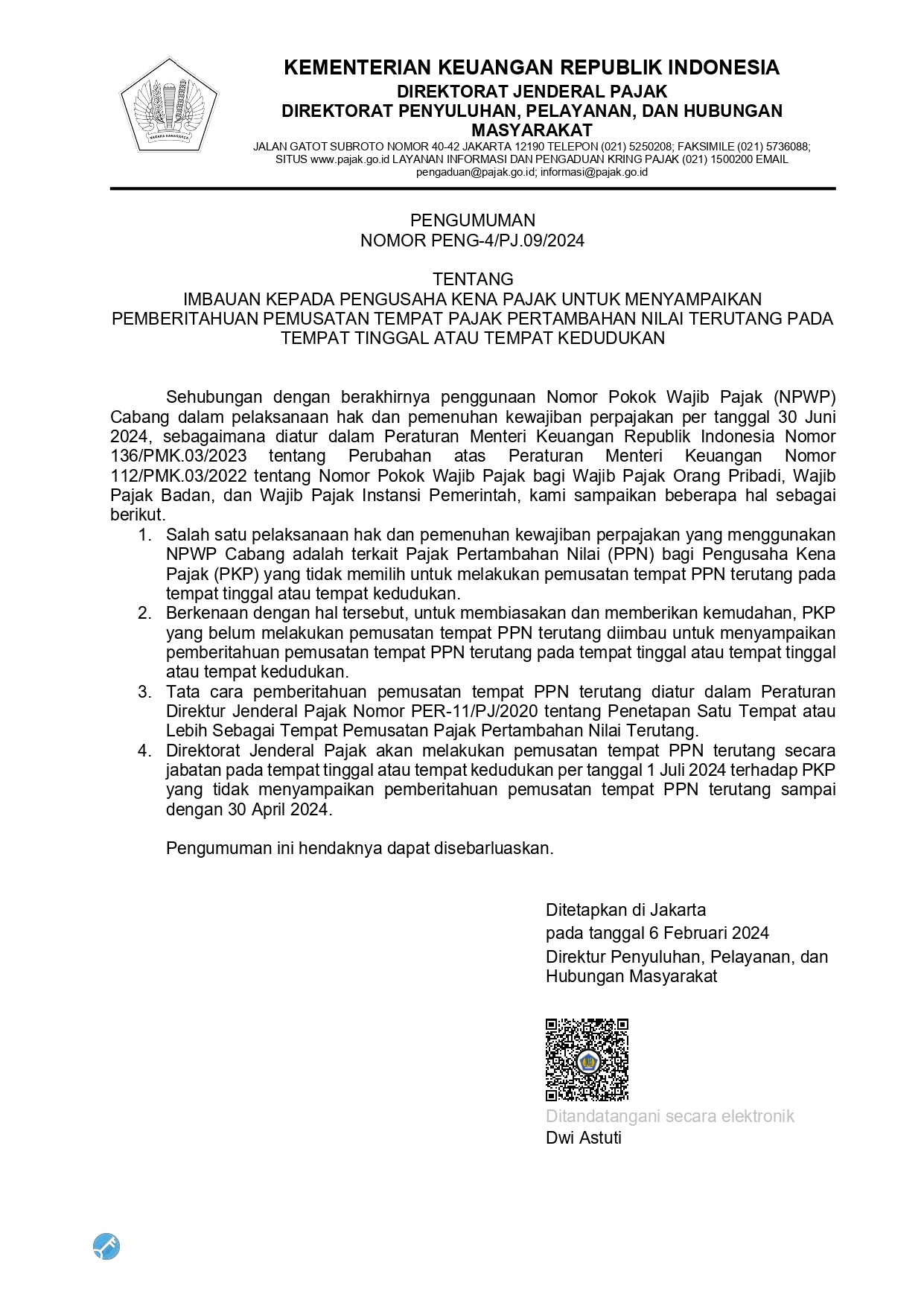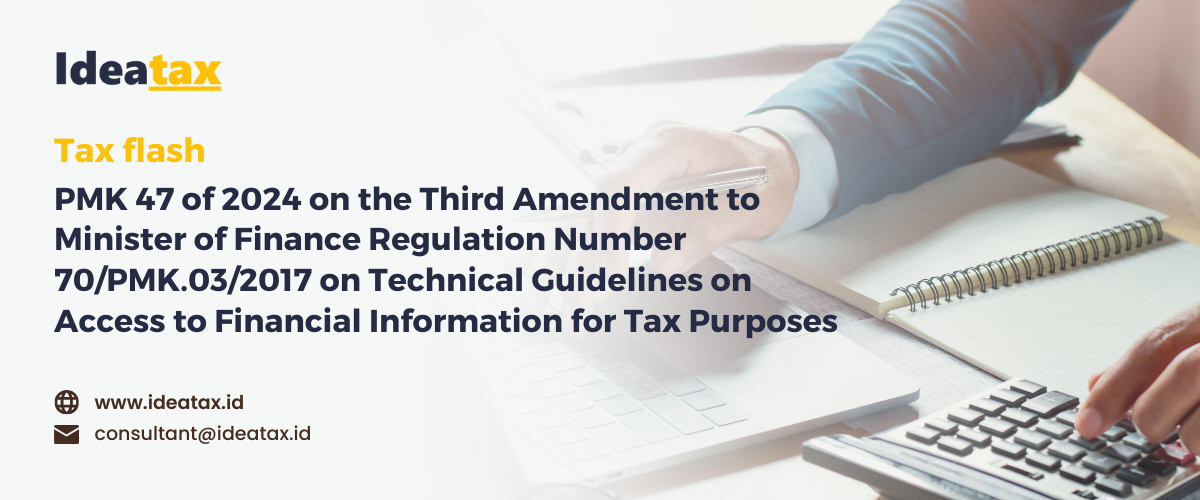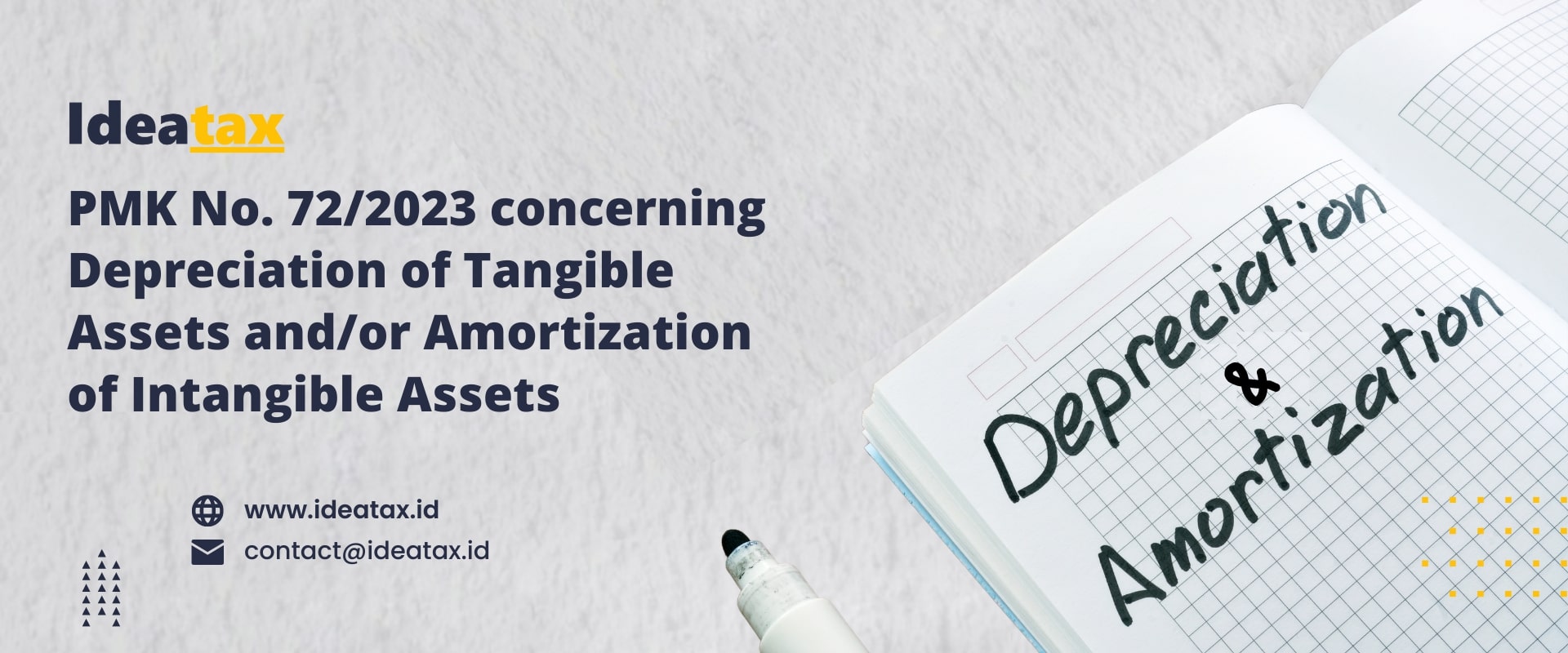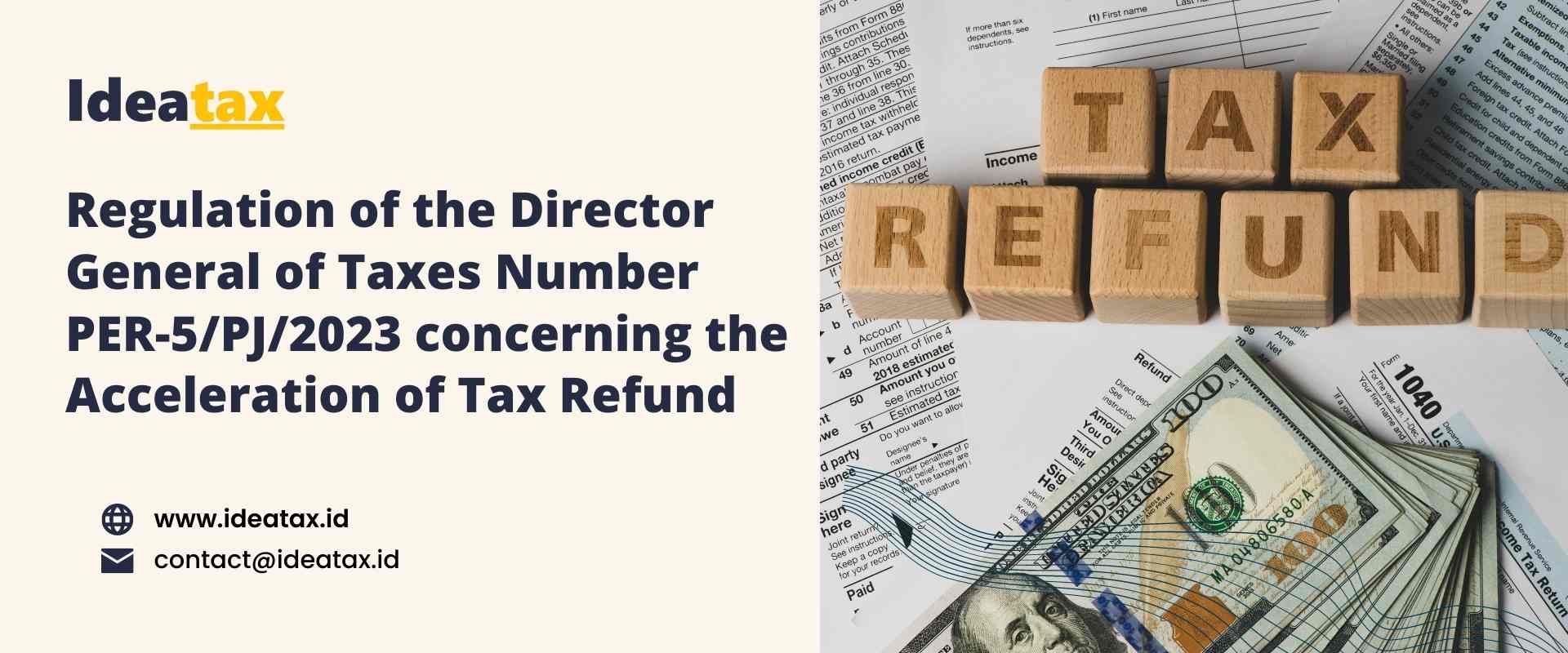Hello, is there anything we can help?

Digital Taxation Update: Pillar One Amount A
Jakarta, Ideatax -- The world has changed. The emergence of the digital era has brought many significant changes to human social life, one of which is taxation. Before the digital era, a taxation authority could only impose tax on economic activities if the entity conducting the transaction had a permanent establishment in a particular tax jurisdiction. But now, this does not apply. In the digital era, an entity can conduct transactions from and to anywhere. Thus, there are difficulties from the taxation authority to impose tax on digital economy transactions.
To overcome the deadlock, the OECD offers alternative pillar one and pillar two which are the work of the Task Force on the Digital Economy (TFDE). The TFDE study was then agreed by the Finance Ministers of the G20 countries at the Inclusive Framework on BEPS meeting in 2019 in Osaka (OECD, 2019).
During the meeting, OECD countries agreed to develop two pillars to address tax issues arising from digital activities. Pillar one focuses on the allocation of taxation rights and a comprehensive view of profit allocation and nexus rules. On the other hand, pillar two focuses on other issues in Base Erosion and Profit Shifting/BEPS (OECD, 2019).
However, the development of the two pillars has not gone smoothly. OECD countries have not reached an agreement on what and how to tax digital economic activities (Ardin, 2021). Developed countries, which are generally the owners of technological resources, want the right to taxation to be exercised by the tax jurisdiction where the source of the technology originates. Meanwhile, developing countries, which are generally the market for digital economic activities, argue that taxes on digital transactions should be imposed where the market for digital activities is located.
As a result of these differences of opinion, each country takes its own policy regarding the taxation of digital economic activities, which in turn encourages competition between jurisdictions and triggers massive tax planning.
Several times OECD countries held meetings to discuss the follow-up of pillar one and pillar two, but have not yet reached an agreement. However, in July 2023 something amazing happened. A total of 138 OECD inclusive framework member countries agreed on a follow-up to both pillars to address tax challenges arising from the digitalization of the economy (OECD, 2023). The agreement was then brought to the G20 countries meeting in India in September 2023.
Through the meeting, the G20 secretary shared that a Multilateral Convention (MLC) has been developed by the Inclusive Framework that allows taxing jurisdictions to test the domestic taxation rights of a portion of profits earned by multinational entities. In addition, the OECD secretary also reported that the OECD has proposed a framework to simplify and direct the arms-length principle in accordance with the distribution of marketing and economic activities. Also, the Subject to Tax Rule (STTR) provision allows developing countries to update bilateral agreements in order to ascertain where income is taxed.
The Secretary General of the OECD stated that the Multilateral Convention (MLC) as mentioned above, allows OECD countries to allocate taxation rights to taxing jurisdictions where the digital economy market is located. This division of taxation rights is then referred to as Pillar One Amount A.
There are six Pillar One Amount A provisions regulated in the MLC, including the following:
-
Scope of Taxation Rights. Pillar One Amount A regulates that multi-national enterprises (MNEs) with income of more than 20 million euros and a profit level above 20%, must allocate 25% of their profits that exceed 10% of income to market jurisdictions. The threshold of 20 million euros will be reduced to 10 million euros within 7 years.
-
Source of income regulation. The MLC also regulates the allocation of amount A between market jurisdictions.
-
Regulation on the mechanism to reduce double taxation.
-
Arrangements regarding the process to ensure tax certainty related to Amount A.
-
Arrangements regarding the commitment to remove specified measures or measures of each country in taxing the digital economy which will ultimately increase competition between tax jurisdictions.
-
Arrangements regarding the administration of Amount A.
Please note that implementing the MLC in relation to Amount A is not an easy matter. There are five steps that must be taken by the taxation authority to apply the new provisions related to pillar one, including determining the scope, determining nexus & revenue sourcing, determining the basis of taxation, allocating amount A and eliminating double taxation (OECD, 2021). The details of the roadmap and steps taken in the implementation of amount A can be seen in the following figure:
This is an update on OECD Pillar One Amount A, in the next article we will discuss Pillar One Amount B and provisions regarding taxation of other digital activities.
References
Ardin, G. (2021). Taxing Digital Advertising: a Proposal to Indonesia. Scientax, 1-28.
OECD. (2019). Secretariat Proposal for a "Unified Approach under Pillar one". Paris: OECD.
OECD. (2021). Fact Sheet Amount A. Paris: OECD.
OECD. (2023). OECD Secretary - General Tax Report to G20 Leaders. Paris: OECD.















